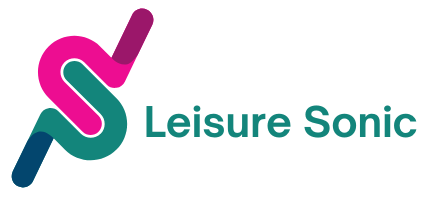Table of Contents
ToggleIn a world where software is just a click away, SaaS websites are the superheroes of the digital age. They swoop in to save the day, offering businesses flexible solutions without the hassle of hefty installations or outdated software. Imagine having everything you need right at your fingertips, all while sipping coffee in your pajamas. Sounds dreamy, right?
Overview of SaaS Websites
SaaS websites serve as platforms for delivering software applications via the internet. Businesses utilize these platforms to offer services without requiring users to install or maintain software locally. Flexibility characterizes the SaaS model, allowing for easy scalability to meet various business needs.
Cost-effectiveness stands out as a major benefit when using SaaS websites. Companies can avoid hefty upfront investments typically associated with traditional software purchases. Instead, subscription-based pricing models provide predictable costs, making budgeting simpler.
Security measures in SaaS websites often surpass what individual businesses can implement. Providers invest in robust security protocols, ensuring data protection and compliance with regulations. Reliable uptime is another key aspect; most SaaS services guarantee high availability, minimizing disruptions for users.
User experience receives significant attention in SaaS design. Intuitive interfaces and user-friendly navigation enhance engagement, making it easy for both novice and experienced users to leverage software functionalities. Continuous updates enable users to access the latest features without lifting a finger; automatic enhancements eliminate the hassle of manual upgrades.
Integration capabilities mark another advantage of SaaS platforms. Seamless connections with other tools and applications enable businesses to streamline workflows and improve efficiency. As the demand for remote work increases, SaaS websites provide necessary solutions that support collaboration and productivity from any location.
The adaptability of SaaS models cannot be overlooked. Companies benefit from various deployment options, ranging from single-user access to multi-tenant architectures. SaaS websites cater to diverse industries, addressing specific needs ranging from project management to customer relationship management, making them invaluable resources in the digital ecosystem.
Key Features of SaaS Websites

SaaS websites encompass several essential features that enhance their functionality and user appeal. These characteristics contribute to their effectiveness in addressing modern business needs.
User Interface and Experience
A clean user interface promotes easy navigation, ensuring users can access features without confusion. Designers often prioritize user experience, focusing on intuitive layouts. Simple onboarding processes help new users become productive quickly. Customization options enable businesses to tailor the interface to their unique brand, creating a more personalized experience. Feedback mechanisms allow users to communicate their needs, fostering continuous improvement.
Scalability and Flexibility
Scalability facilitates seamless growth as business demands fluctuate. Users can easily upgrade their subscriptions to accommodate larger teams or enhanced features. Flexibility allows integration with various tools, which streamlines workflows and boosts productivity. Companies can tailor solutions to meet industry-specific needs, adapting to changes efficiently. This adaptability makes SaaS offerings invaluable, as they can quickly pivot in response to evolving market trends.
Popular SaaS Website Examples
Numerous SaaS websites excel in delivering innovative tools to users. Here’s a look at industry leaders and emerging startups that showcase the power of SaaS solutions.
Industry Leaders
Salesforce stands out as a top player in customer relationship management. This platform offers extensive features that help businesses manage their sales pipelines and customer interactions effectively. Another widely recognized leader, HubSpot, provides a comprehensive suite for marketing, sales, and service automation, attracting a diverse range of companies. Additionally, Microsoft Azure has gained prominence for its cloud services and integration capabilities, allowing businesses to scale easily and securely as needs grow. These established firms lead the market, continuously enhancing their offerings to keep pace with evolving technology demands.
Emerging Startups
Emerging startups are also making significant contributions to the SaaS landscape. Notion has captured attention with its versatile workspace for notes, project management, and collaboration, appealing to teams of all sizes. Similarly, Airtable combines the functionality of a spreadsheet with the power of a database, empowering users to create custom workflows. Another innovative startup, Figma, specializes in collaborative design tools, enabling teams to work together in real-time on digital projects. These new entrants demonstrate creativity and responsiveness to market needs, reaffirming the dynamic nature of the SaaS industry.
Benefits of Using SaaS Websites
SaaS websites provide significant advantages for businesses in today’s digital landscape. Flexibility remains key as users can access applications from any device with internet access. This convenience eliminates dependency on specific hardware or locations.
Cost-effectiveness stands out prominently. Organizations avoid high upfront costs associated with traditional software purchases, opting instead for manageable subscription-based pricing. Predictable monthly or annual fees simplify budgeting and financial planning.
Security receives high priority in SaaS models. Providers invest heavily in advanced security measures, ensuring data protection and compliance with regulations. Businesses benefit from robust protocols that might exceed their individual capabilities.
Reliable uptime contributes to uninterrupted access. SaaS providers guarantee consistent service availability, minimizing disruptions that could negatively impact productivity. This assurance enhances overall user experience.
User-centric design plays a crucial role in SaaS applications. Intuitive interfaces enhance navigation and usability, allowing new users to adapt quickly. Continuous updates deliver the latest features automatically, negating the need for manual installations.
Integration capabilities enable seamless connections with other platforms. This feature streamlines workflows, enhances operational efficiency, and supports remote work dynamics. Adapting to specific industry needs becomes straightforward with versatile SaaS solutions.
Scalability allows businesses to grow without stress. As demands change, users can upgrade their subscriptions to better fit evolving requirements. Tailored SaaS solutions help companies remain competitive in a fast-paced market.
Customization options enrich user experiences. Businesses can modify applications to reflect their branding and specific operational processes. Feedback mechanisms ensure constant improvement, aligning the service with user expectations.
Challenges and Considerations
SaaS websites face several challenges that businesses need to address. Data security presents a primary concern as vulnerabilities can lead to significant breaches. Depending on the provider, robust security measures might vary, so users must evaluate service offerings carefully.
Downtime can disrupt access to applications, affecting productivity. Providers strive for high uptime, but occasional outages can occur. To mitigate this risk, users can consider solutions with strong service level agreements that guarantee minimal downtime.
Integration with existing systems poses another challenge. Not all SaaS platforms connect seamlessly with other tools, which may lead to inefficiencies. Assessing compatibility before implementation ensures smoother adoption and operational flow.
Customer support quality often varies among SaaS providers. Businesses need reliable assistance during technical issues or inquiries. Reviewing support options—like chat, email, and phone—helps ensure prompt resolution of potential problems.
Subscription-based pricing can lead to unforeseen expenses. While predictable monthly costs seem beneficial, scaling usage can trigger higher fees. Users should analyze their needs to choose appropriate plans that align with their budgets.
Customization options differ across SaaS applications. Some platforms allow extensive modifications, while others remain limited in personalizations. Selecting a solution with sufficient customization can enhance user satisfaction and operational efficiency.
Lastly, achieving user adoption requires attention. Training and onboarding initiatives can facilitate smoother transitions. Therefore, investing in user engagement techniques boosts overall productivity, ensuring that teams maximize the benefits of the SaaS solution.
SaaS websites are revolutionizing how businesses operate in today’s digital landscape. Their flexibility and cost-effectiveness make them appealing to organizations of all sizes. With features like robust security measures and seamless integration capabilities, these platforms cater to diverse industry needs.
The user-centric design enhances the overall experience, ensuring that businesses can adapt quickly to changing demands. While challenges exist, careful evaluation of providers and plans can mitigate risks. As the SaaS market continues to evolve, these websites are set to remain essential tools for achieving efficiency and growth in an increasingly competitive environment.





